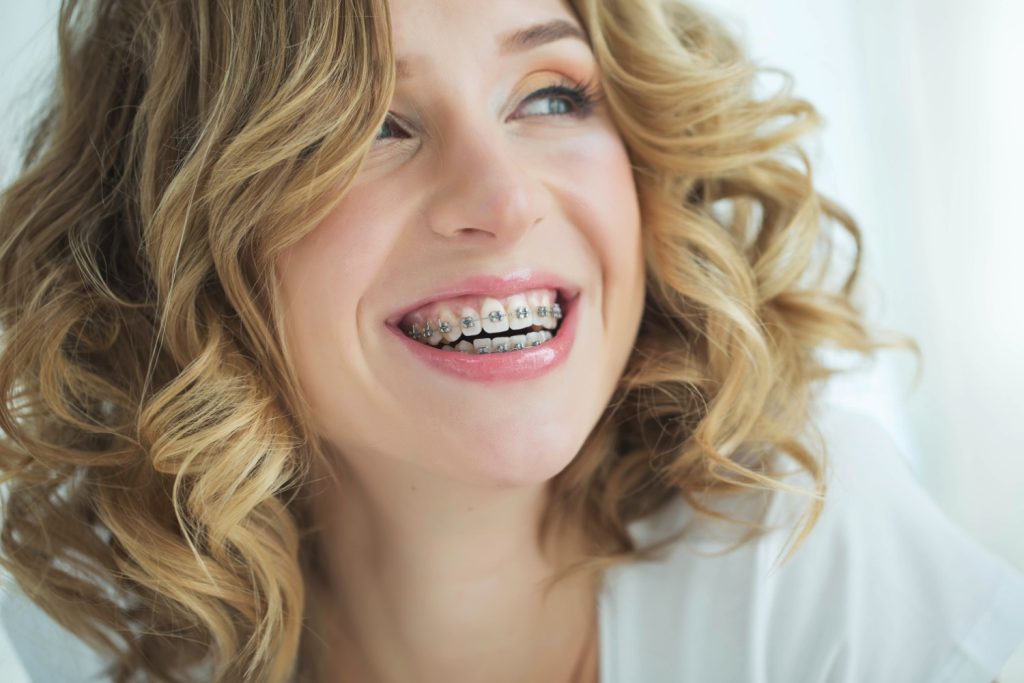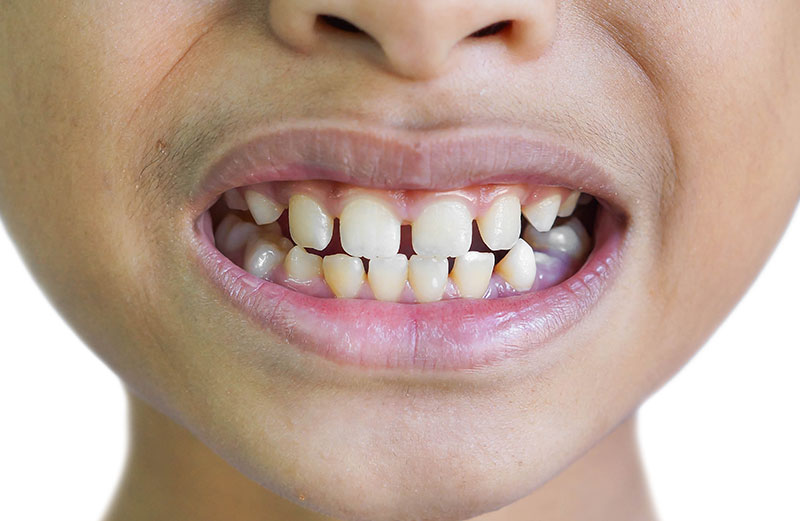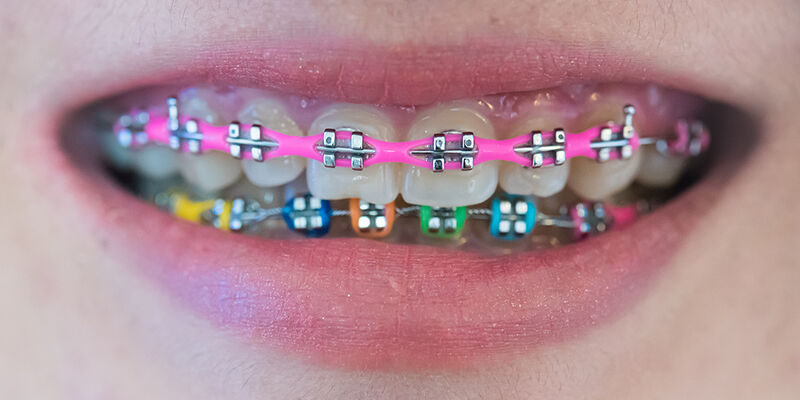Black Braces: A Comprehensive Guide to Modern Orthodontic Treatment
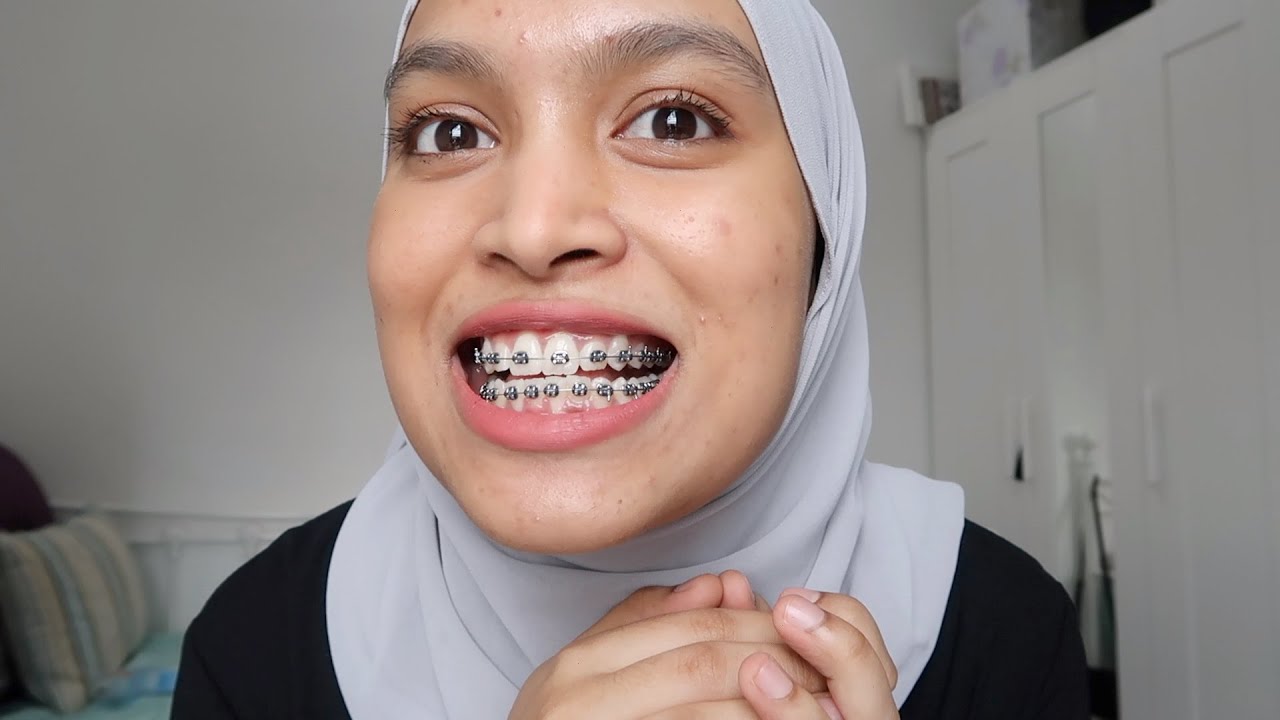
Table of Contents
- Introduction to Black Braces
- History and Evolution of Braces
- Why Choose Black Braces?
- Types of Black Braces
- Getting Black Braces: The Process
- Caring for Your Black Braces
- Common Myths and Misconceptions
- Frequently Asked Questions (FAQ)
- Patient Testimonials
- Conclusion
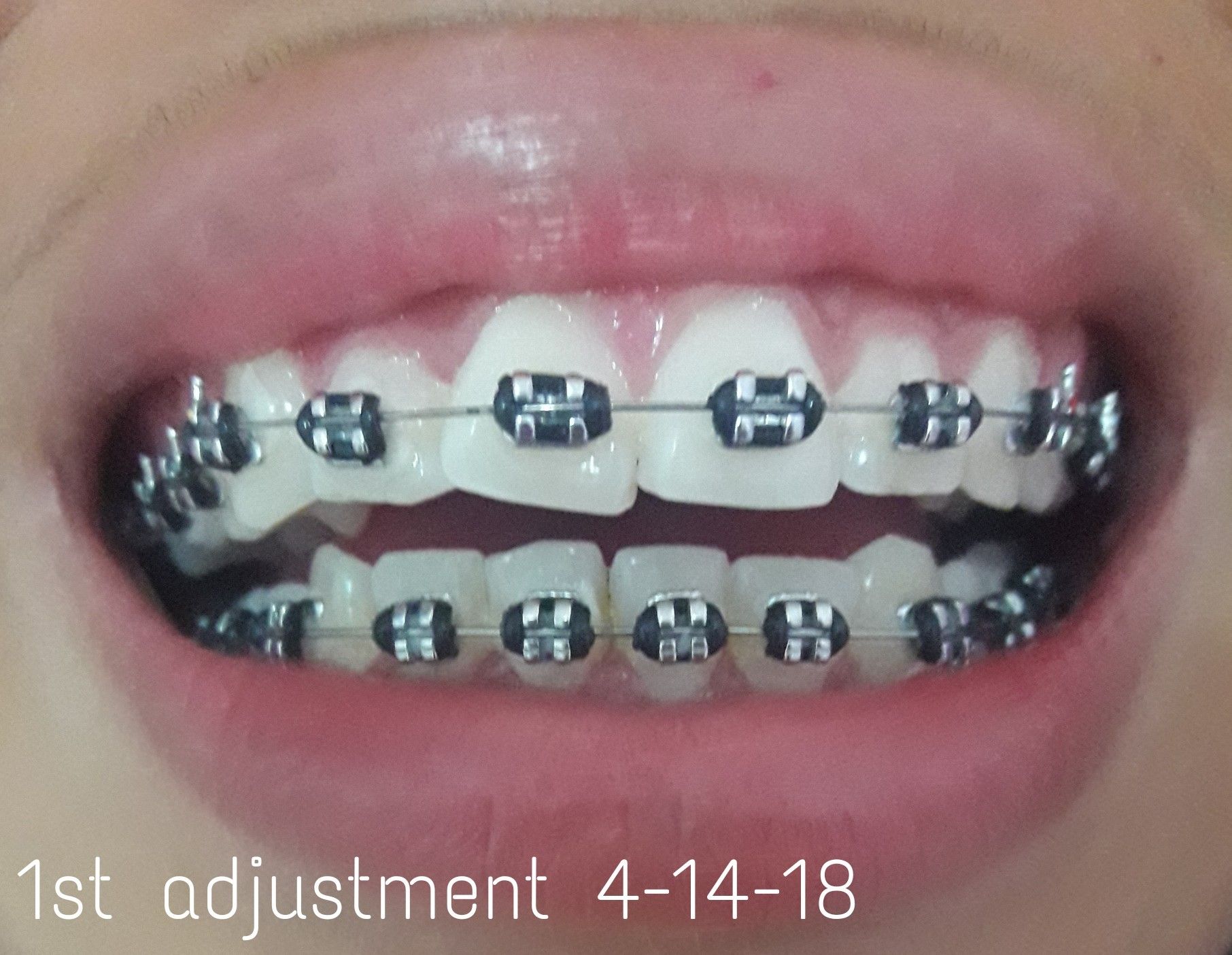
Introduction to Black Braces
Orthodontic treatment has significantly evolved, offering patients more options than ever before. Among these, black braces have emerged as a popular choice for those seeking a bold, stylish look. Whether you’re a teenager or an adult, black braces can transform your smile while adding a touch of sophistication.
This comprehensive guide will explore the world of black braces, covering their benefits, types, and the entire process of getting them. We’ll also provide tips on caring for black braces, debunk common myths, and answer frequently asked questions. If you’re considering black braces, this guide will equip you with all the information you need to make an informed decision.
History and Evolution of Braces
Understanding the history and evolution of braces offers a fascinating insight into how modern orthodontic treatments, like black braces, came to be.
Ancient Beginnings
The practice of straightening teeth dates back to ancient civilizations. Archaeologists have found evidence of early dental devices in mummified remains, suggesting that the ancient Egyptians, Greeks, and Etruscans made rudimentary attempts at orthodontic treatment.
The 18th and 19th Centuries
The foundation of modern orthodontics was laid in the 18th and 19th centuries. Pierre Fauchard, a French dentist, developed the first orthodontic appliance, the “Bandeau,” in the early 1700s. This device helped expand the arch of the mouth.
In the 19th century, Edward H. Angle, an American dentist, made significant contributions to orthodontics. He developed a classification system for malocclusions and various orthodontic appliances, setting the stage for contemporary orthodontic practices.
The 20th Century and Beyond
The 20th century saw rapid advancements in orthodontic technology. Stainless steel replaced gold and silver, making braces more durable and affordable. The introduction of dental adhesives allowed for the direct bonding of brackets to teeth, eliminating the need for cumbersome bands around each tooth.
Today, braces are designed to be more effective, comfortable, and aesthetically pleasing. Innovations like clear aligners, ceramic braces, and colored options such as black braces have made orthodontic treatment more appealing to a broader audience.

Why Choose Black Braces?
Choosing the color of your braces is a personal decision that can reflect your style and personality. Black braces, in particular, offer several unique benefits that make them a popular choice among patients.
Aesthetic Appeal
Black braces provide a sleek and sophisticated look. The bold color contrasts beautifully with the natural color of teeth, creating a striking appearance that can enhance your overall look. Black braces are both stylish and eye-catching, making your orthodontic treatment more enjoyable.
Sophisticated Look
The color black is often associated with elegance and sophistication. Black braces can give you a polished, professional appearance, making them an excellent choice for adults and professionals who want their braces to look refined and stylish.
Versatility
Black braces are versatile and can complement various personal styles and fashion choices. Whether you prefer a casual look or a more formal appearance, black braces can seamlessly fit into your aesthetic. Additionally, black elastics can make the brackets appear smaller and less noticeable.
Types of Black Braces
When considering black braces, it’s important to understand the different types available. Each type offers distinct advantages, and your orthodontist can help determine which option is best suited for your specific needs.
Traditional Metal Braces
Traditional metal braces are the most common type of braces and are known for their durability and effectiveness. These braces consist of metal brackets and wires, which can be customized with black elastics or bands to achieve the desired look.
Advantages:
- Effective: Metal braces are highly effective in correcting a wide range of orthodontic issues, including severe misalignments and bite problems.
- Cost-Effective: They are generally more affordable than other types of braces.
- Durable: Metal braces are strong and resistant to breakage.
Considerations:
- Visibility: While metal braces are more noticeable, the addition of black elastics can turn them into a stylish accessory.
- Comfort: Some patients may experience discomfort, especially after adjustments.
Ceramic Braces
Ceramic braces function similarly to metal braces but use clear or tooth-colored brackets that blend in with your teeth. Black bands can be added to these braces to create a unique and visually appealing look.
Advantages:
- Aesthetic Appeal: Ceramic braces are less noticeable than metal braces, making them a popular choice for those concerned about appearance.
- Effective: They offer the same level of effectiveness as traditional metal braces.
Considerations:
- Cost: Ceramic braces tend to be more expensive than metal braces.
- Maintenance: They can be more prone to staining and require diligent care to keep them looking their best.
Self-Ligating Braces
Self-ligating braces use a special clip or bracket system instead of elastics to hold the archwire in place. These braces can still be customized with black brackets to achieve a stylish look.
Advantages:
- Comfort: Self-ligating braces generally require fewer adjustments, which can mean less discomfort.
- Efficiency: They often shorten treatment time and require fewer office visits.
Considerations:
- Cost: They can be more expensive than traditional metal braces.
- Visibility: While less noticeable than traditional braces, they are still visible.
Getting Black Braces: The Process
The process of getting black braces involves several steps, from the initial consultation to the final removal of the braces. Understanding each step can help you feel more prepared and confident about your orthodontic treatment.
Initial Consultation
The first step in getting black braces is scheduling an initial consultation with your orthodontist. During this visit, the orthodontist will:
- Evaluate Your Oral Health: A comprehensive examination of your teeth, gums, and jaw will be conducted to determine if braces are necessary and to identify any underlying dental issues.
- Discuss Treatment Options: Your orthodontist will explain the different types of braces available, including black braces, and help you decide which option is best for you.
- Take Impressions and X-Rays: Impressions of your teeth and X-rays will be taken to create a detailed treatment plan tailored to your specific needs.
Fitting the Braces
Once you have decided on black braces, the next step is the fitting process. This typically involves:
- Cleaning and Drying: Your teeth will be thoroughly cleaned and dried to ensure proper adhesion of the brackets.
- Applying the Brackets: The orthodontist will carefully attach the brackets to your teeth using a special dental adhesive.
- Inserting the Archwire: The archwire, which guides the movement of your teeth, will be threaded through the brackets and secured with black elastics or clips.
Adjustments and Maintenance
Throughout your treatment, you will need to visit your orthodontist regularly for adjustments. These appointments are crucial for ensuring that your teeth are moving as planned and for making any necessary modifications to the braces.
- Tightening the Archwire: During adjustments, the orthodontist will tighten the archwire to continue moving your teeth into the desired position.
- Replacing Elastics: If you have traditional metal or ceramic braces, the black elastics will be replaced during each visit to maintain proper tension and hygiene.
- Monitoring Progress: The orthodontist will monitor your progress and make any necessary adjustments to the treatment plan.
Caring for Your Black Braces
Proper care and maintenance of your black braces are essential for ensuring effective treatment and maintaining oral health. Here are some tips for caring for your braces:
Brushing and Flossing
Good oral hygiene is crucial when you have braces. Here’s how to keep your teeth and braces clean:
- Brush After Every Meal: Use a soft-bristled toothbrush and fluoride toothpaste to brush your teeth and braces after every meal. Pay special attention to the areas around the brackets and wires.
- Floss Daily: Use a floss threader or orthodontic floss to clean between your teeth and under the archwire. This helps remove food particles and plaque that can lead to cavities and gum disease.
- Rinse with Mouthwash: An antiseptic mouthwash can help reduce bacteria and keep your mouth fresh. Rinse daily to enhance your oral hygiene routine.
Dietary Considerations
Certain foods can damage your braces or make them more difficult to clean. Here are some dietary tips to follow:
- Avoid Hard and Sticky Foods: Foods like nuts, popcorn, chewing gum, and sticky candies can damage your braces and should be avoided.
- Cut Food into Small Pieces: Cutting fruits, vegetables, and other hard foods into small, bite-sized pieces can make them easier to eat and reduce the risk of damaging your braces.
- Limit Sugary Foods and Drinks: Sugary foods and drinks can increase the risk of cavities. Try to limit your intake and brush your teeth after consuming them.
Dealing with Discomfort
It’s normal to experience some discomfort, especially after getting your braces adjusted. Here are some tips to manage any pain or discomfort:
- Use Orthodontic Wax: If your braces are causing irritation to your cheeks or lips, apply orthodontic wax to the brackets or wires to create a smooth surface.
- Take Over-the-Counter Pain Relievers: If you experience soreness, over-the-counter pain relievers like ibuprofen can help alleviate discomfort.
- Rinse with Warm Salt Water: A warm salt water rinse can soothe irritated gums and reduce inflammation. Mix one teaspoon of salt in a glass of warm water and rinse your mouth for 30 seconds.

Common Myths and Misconceptions
There are many myths and misconceptions about braces that can create unnecessary anxiety or confusion. Let’s debunk some of the most common myths about black braces:
Myth 1: Braces Are Only for Kids
While braces are often associated with teenagers, they are suitable for patients of all ages. Many adults choose to get braces to correct misalignments and improve their oral health. Black braces can be a stylish and sophisticated option for adult patients as well.
Myth 2: Braces Are Painful
While you may experience some discomfort, especially after adjustments, modern braces are designed to be more comfortable than ever. Any soreness typically subsides within a few days, and there are various ways to manage discomfort effectively.
Myth 3: Braces Take Forever to Work
The duration of orthodontic treatment varies depending on the complexity of the case, but most treatments last between 18 and 24 months. Advances in orthodontic technology have made it possible to achieve results more efficiently than in the past.
Myth 4: You Can’t Play Sports with Braces
You can still participate in sports while wearing braces. It’s important to wear a mouthguard to protect your teeth and braces from injury. Your orthodontist can provide a custom-fitted mouthguard for maximum protection.
Myth 5: Braces Will Interfere with Daily Life
Braces may require some adjustments to your daily routine, but they won’t interfere significantly with your lifestyle. With proper care and maintenance, you can continue to enjoy your favorite activities and foods with some minor modifications.
Frequently Asked Questions (FAQ)
Q1: How often do I need to visit the orthodontist with black braces? A1: Regular visits every 4 to 8 weeks are typically required to adjust the braces and monitor progress. Your orthodontist will provide a specific schedule based on your treatment plan.
Q2: Can I choose any shade of black for my braces? A2: Yes, many orthodontic offices offer a variety of black shades for elastics or bands, allowing you to customize your look according to your preference.
Q3: Will black braces stain my teeth? A3: The braces themselves won’t stain your teeth, but poor oral hygiene can lead to discoloration around the brackets. Regular brushing and flossing are essential to prevent staining.
Q4: Can I switch the color of my braces during treatment? A4: Yes, you can choose different colors for your elastics at each adjustment appointment, allowing you to change the look of your braces regularly.
Q5: Are black braces more expensive than other colors? A5: The cost of braces typically depends on the type of braces and the complexity of the treatment rather than the color of the elastics. Consult your orthodontist for specific pricing information.
Q6: What happens if a bracket or wire breaks? A6: Contact your orthodontist immediately if a bracket or wire breaks. They will provide instructions on how to manage the issue until you can come in for a repair.
Q7: Can I use whitening products while wearing black braces? A7: It’s best to avoid whitening products while wearing braces, as they can cause uneven coloration. Wait until after your braces are removed to whiten your teeth.
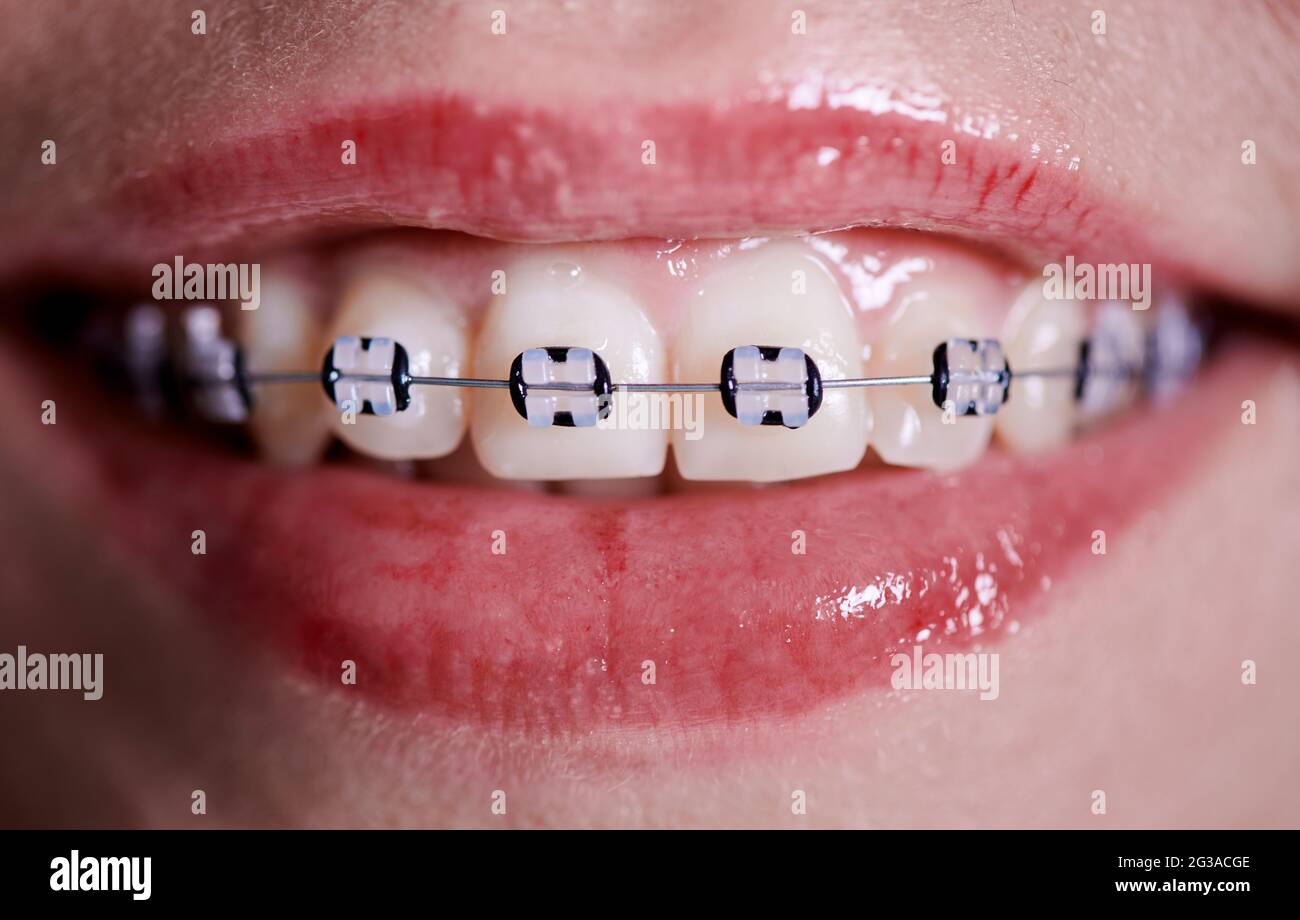
Conclusion
Black braces offer a unique blend of style and effectiveness, making them an excellent choice for orthodontic treatment. Whether you’re a teenager or an adult, black braces can help you achieve a beautifully aligned smile while allowing you to express your personality. From understanding the types of black braces available to learning how to care for them, this comprehensive guide has provided you with all the information you need to make an informed decision.
At Dr. Haroon Dental Specialist Clinic, we are committed to providing high-quality orthodontic care tailored to your needs. If you’re considering black braces, we invite you to schedule a consultation with our experienced team. Let us help you achieve the smile you’ve always wanted—stylishly and confidently with black braces.






